In thrall to the silver screen, Hiroshi Sugimoto returns to theatres after over a decade
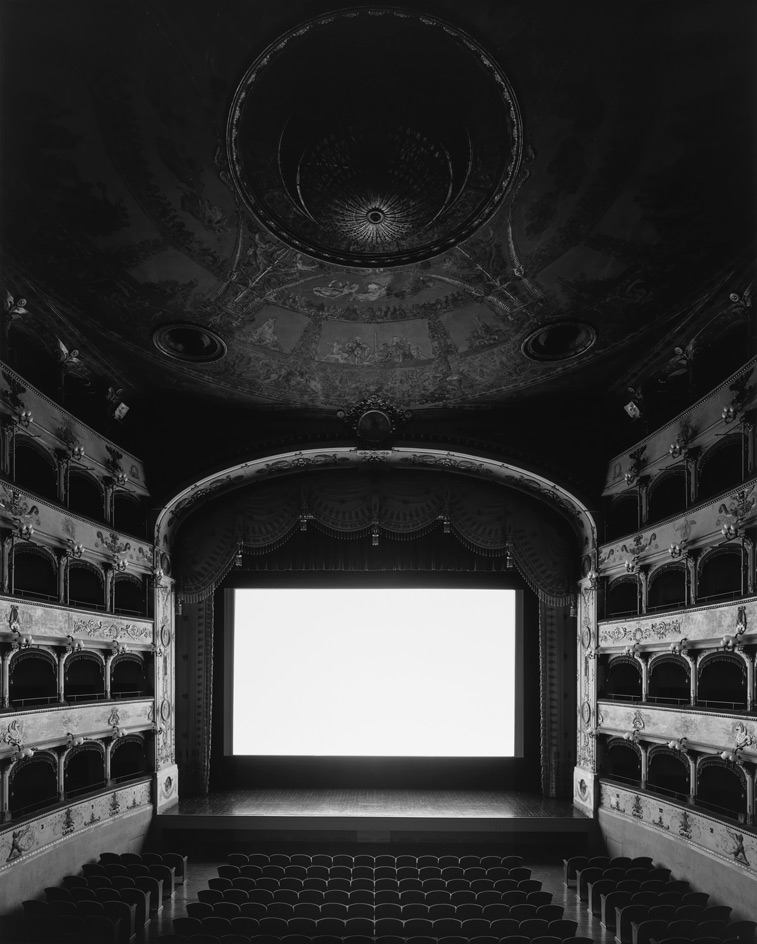
Is it possible to watch a whole film in a single frame? ‘Habitual self-interlocutor’ Hiroshi Sugimoto has been attempting to distill cinema into a snapshot since the 1970s in a series of photographic experiments called Theaters.
The Japanese photographer’s eccentric endeavour began in a movie theatre in New York’s East Village, where he set up his large-format camera with its shutter fixed at its widest aperture and directed at the screen. After a two-hour exposure, Sugimoto closed the shutter: he had indeed succeeded in capturing the whole movie in a single frame.
Sugimoto’s project continued through the 1980s and 90s, the artist traveling all over the US, to 1920s film theatres, to the more grandiose cinemas of the 1950s, insalubrious downtown dives and drive-ins. The project took the form of a historical and architectural document, as much as an exploration of our relationship with time-based media, exploring the environments for viewing films and how they might stimulates or simulate experience.
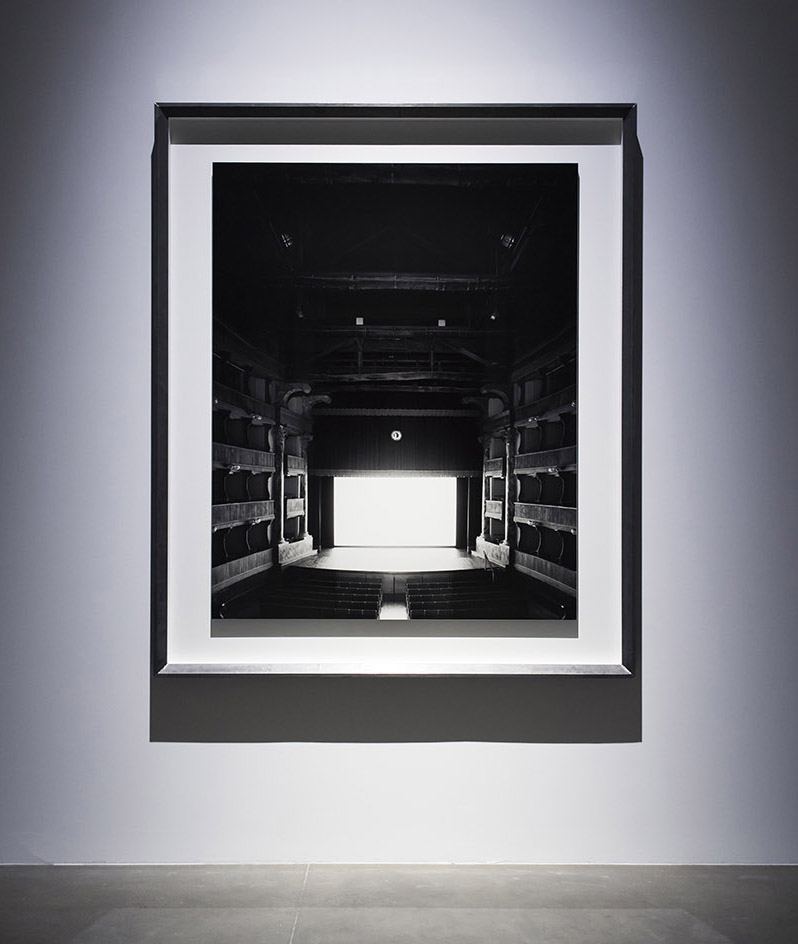
Installation view of ‘Le Notti Bianche’ at Fondazione Sandretto Re Rebaudengo
In thrall to the silver screen as Sugimoto was, he abandoned the project for 12 years. Until three years ago, that is. Picking up his camera again, this time in Italy, Sugimoto shot theatres all over the country – a continuation of his previous investigation.
Twenty new works are now being presented at the Fondazione Sandretto Re Rebaudengo in Turin, including the city’s own historic Teatro Carignano, designed by Benedetto Alfieri and first opened to the public in 1753.
In each of these new photographs, the illuminated screen in the centre casts an inexorable light, an ominous blank space for the audience to project their own minds onto. ‘I have always preferred the reflection of life to life itself,’ auteur François Truffaut once wrote. Sugimoto clearly shares the sentiment.
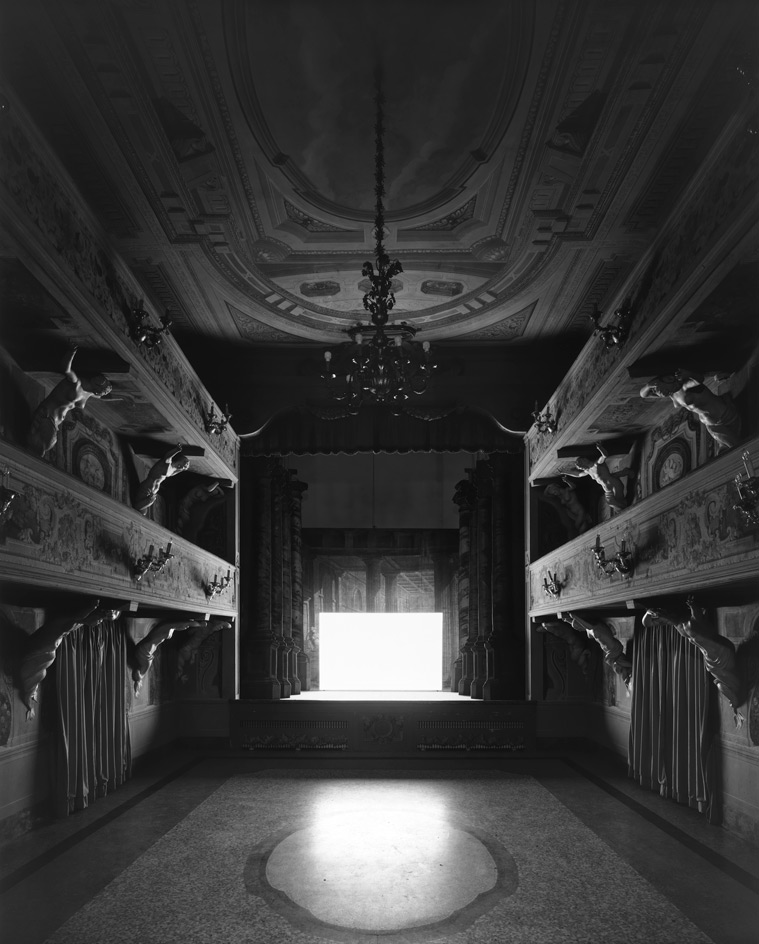
Villa Mazzacorrati Bologna, 2015, Le Notti Bianche, by Hiroshi Sugimoto, 2015. Courtesy of the artist and Marian Goodman Gallery
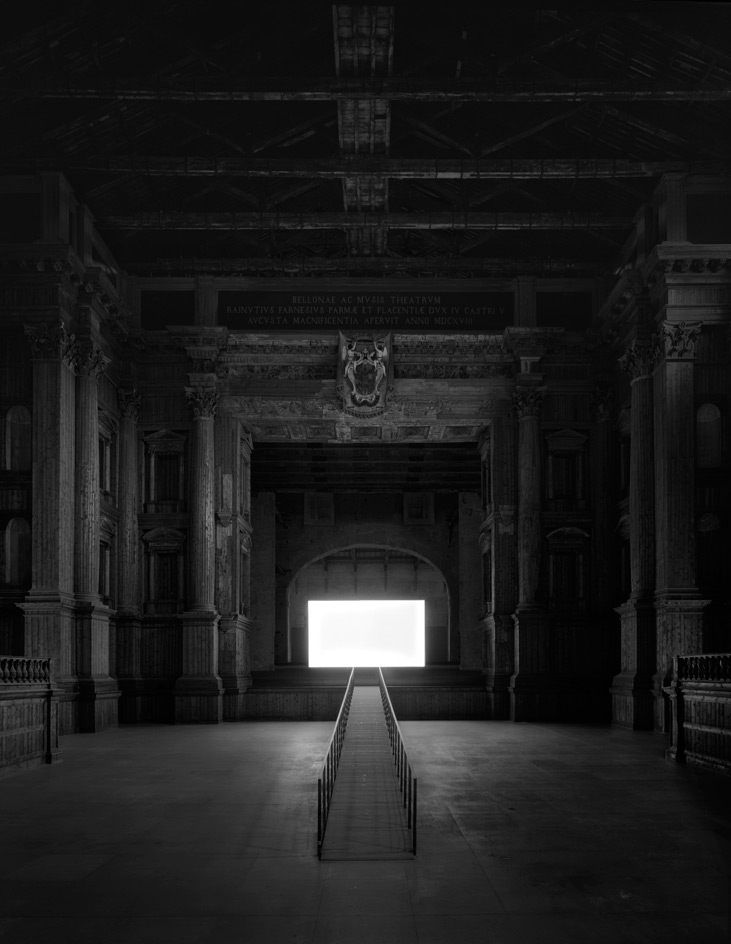
Teatro Farnese, Parma, 2015, Salo, by Hiroshi Sugimoto, 2015. Courtesy of the artist and Marian Goodman Gallery
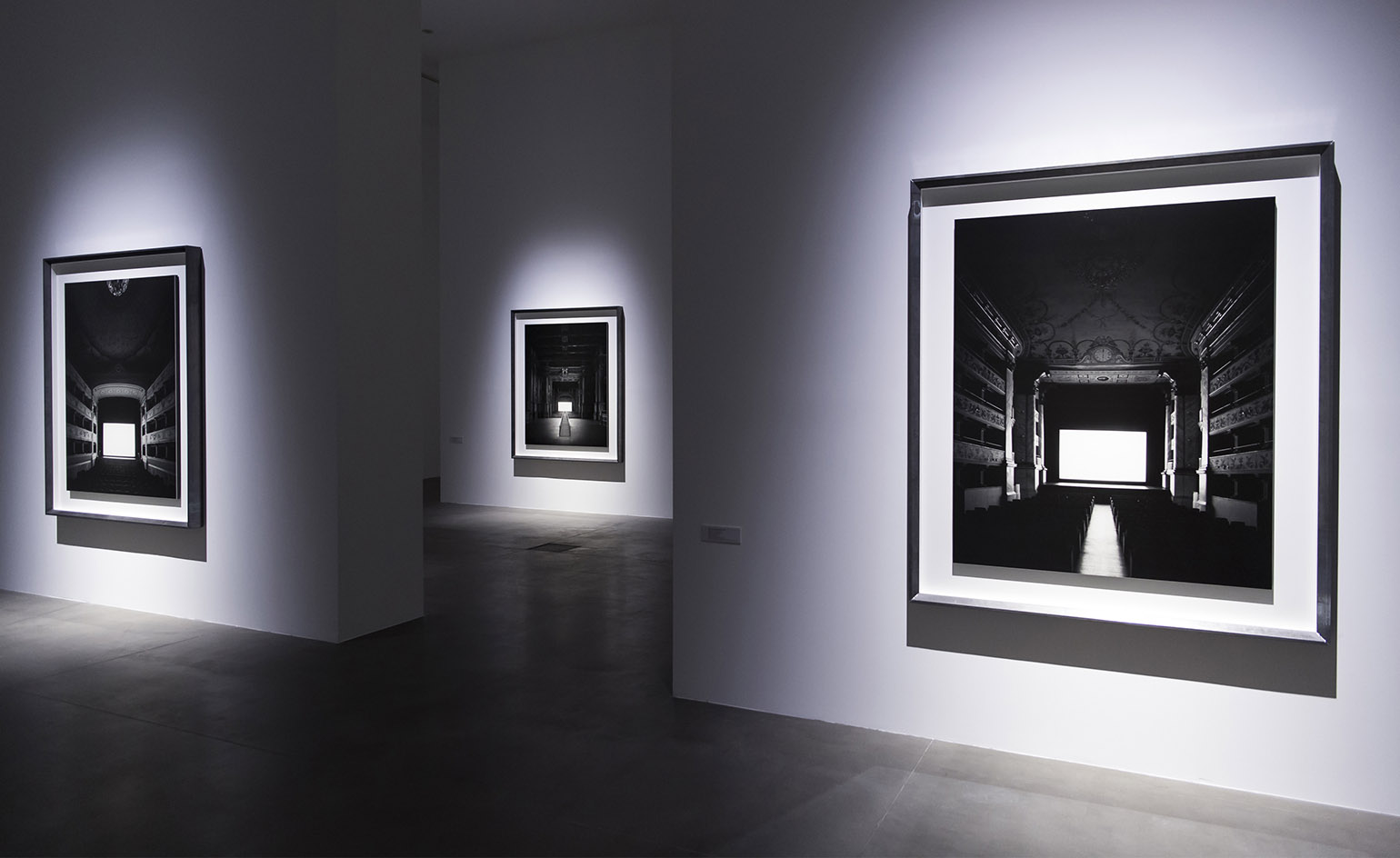
Installation view of ‘Le Notti Bianche’ at Fondazione Sandretto Re Rebaudengo
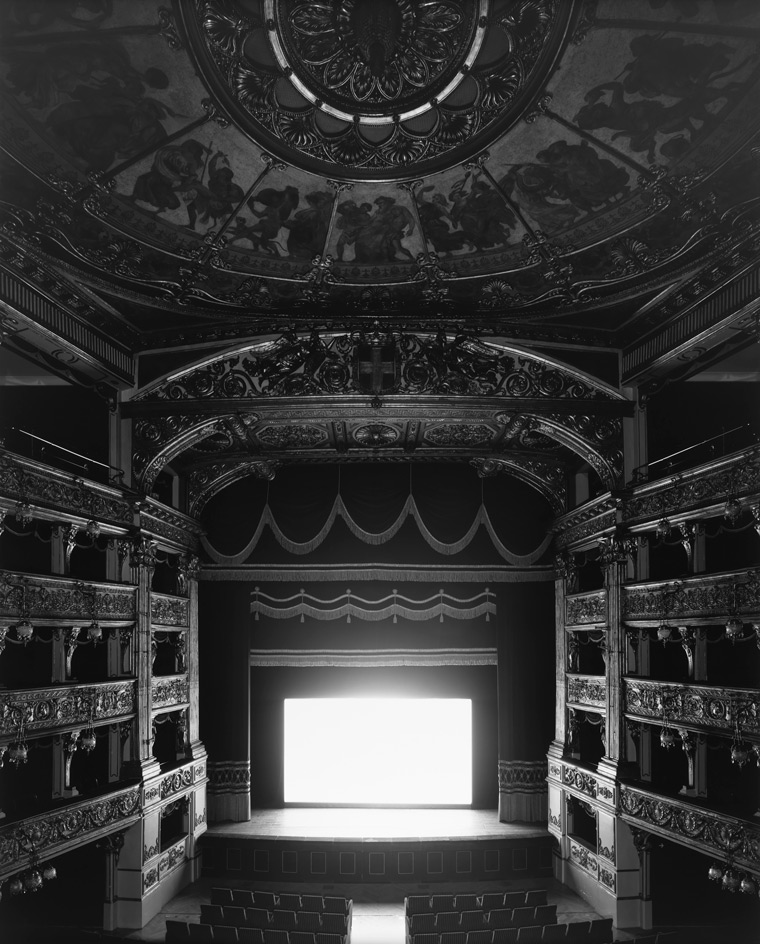
Teatro Carignano, Turin, 2016, by Hiroshi Sugimoto, 2016. Courtesy of the artist and Marian Goodman Gallery
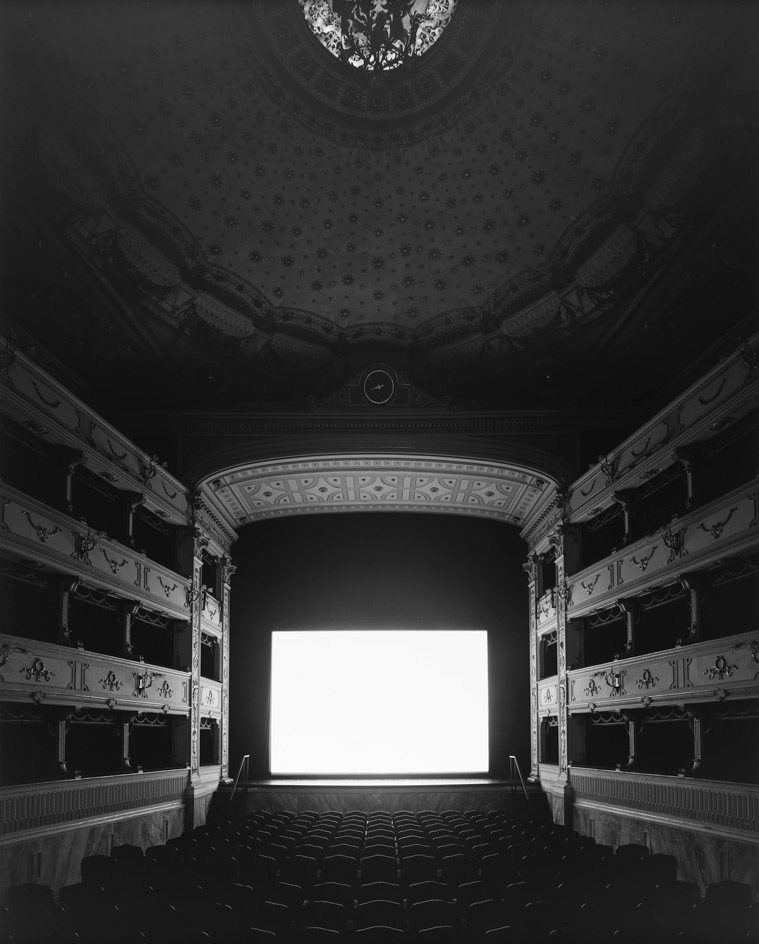
Teatro dei Rozzi, Siena 2014, Summer Time, by Hiroshi Sugimoto, 2014. Courtesy of the artist and Marian Goodman Gallery
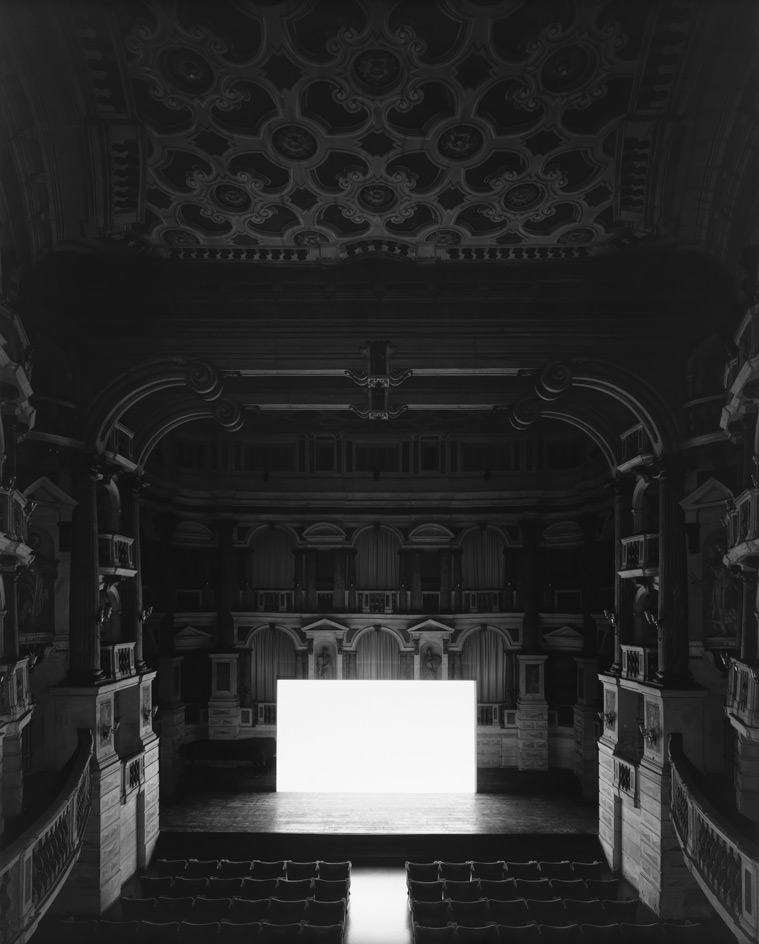
Teatro Scientifico del Bibiena, Mantova, 2015, I Vitelloni, by Hiroshi Sugimoto, 2015. Courtesy of the artist and Marian Goodman Gallery

Installation view of ‘Le Notti Bianche’ at Fondazione Sandretto Re Rebaudengo
INFORMATION
‘Le Notti Bianche’ is on view until 1 October. For more information, visit the Fondazione Sandretto Re Rebaudengo website
ADDRESS
Fondazione Sandretto Re Rebaudengo
Via Modane, 16
10141 Turin
Wallpaper* Newsletter
Receive our daily digest of inspiration, escapism and design stories from around the world direct to your inbox.
Charlotte Jansen is a journalist and the author of two books on photography, Girl on Girl (2017) and Photography Now (2021). She is commissioning editor at Elephant magazine and has written on contemporary art and culture for The Guardian, the Financial Times, ELLE, the British Journal of Photography, Frieze and Artsy. Jansen is also presenter of Dior Talks podcast series, The Female Gaze.
-
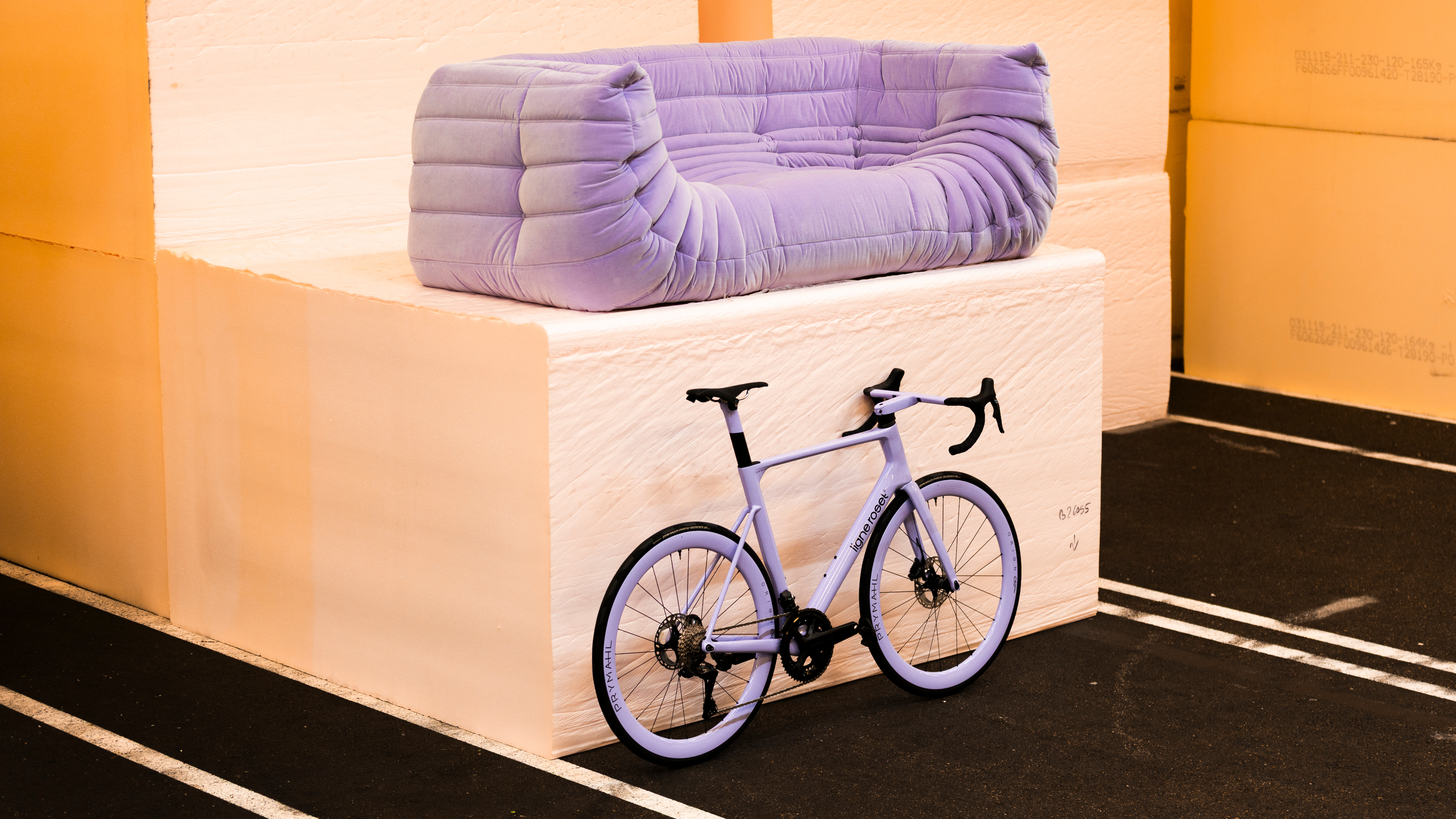 Ligne Roset teams up with Origine to create an ultra-limited-edition bike
Ligne Roset teams up with Origine to create an ultra-limited-edition bikeThe Ligne Roset x Origine bike marks the first venture from this collaboration between two major French manufacturers, each a leader in its field
By Jonathan Bell
-
 The Subaru Forester is the definition of unpretentious automotive design
The Subaru Forester is the definition of unpretentious automotive designIt’s not exactly king of the crossovers, but the Subaru Forester e-Boxer is reliable, practical and great for keeping a low profile
By Jonathan Bell
-
 Sotheby’s is auctioning a rare Frank Lloyd Wright lamp – and it could fetch $5 million
Sotheby’s is auctioning a rare Frank Lloyd Wright lamp – and it could fetch $5 millionThe architect's ‘Double-Pedestal’ lamp, which was designed for the Dana House in 1903, is hitting the auction block 13 May at Sotheby's.
By Anna Solomon
-
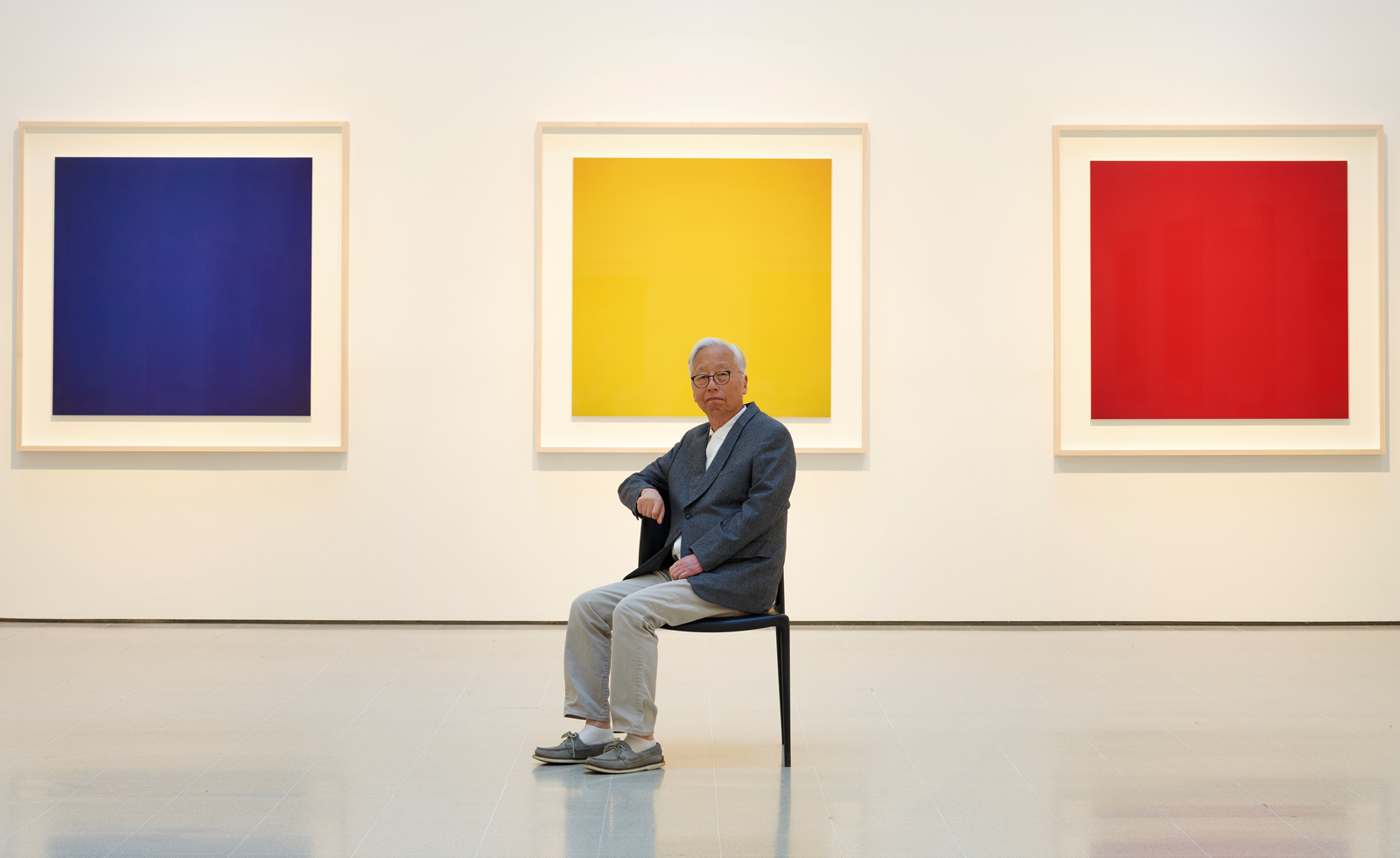 Hiroshi Sugimoto reflects on time and truth ahead of his London retrospective
Hiroshi Sugimoto reflects on time and truth ahead of his London retrospectiveAs ‘Hiroshi Sugimoto: Time Machine’ opens at Hayward Gallery, the artist tells us of his guiding force, and why his Seascapes always end up in the bedroom
By Danielle Demetriou
-
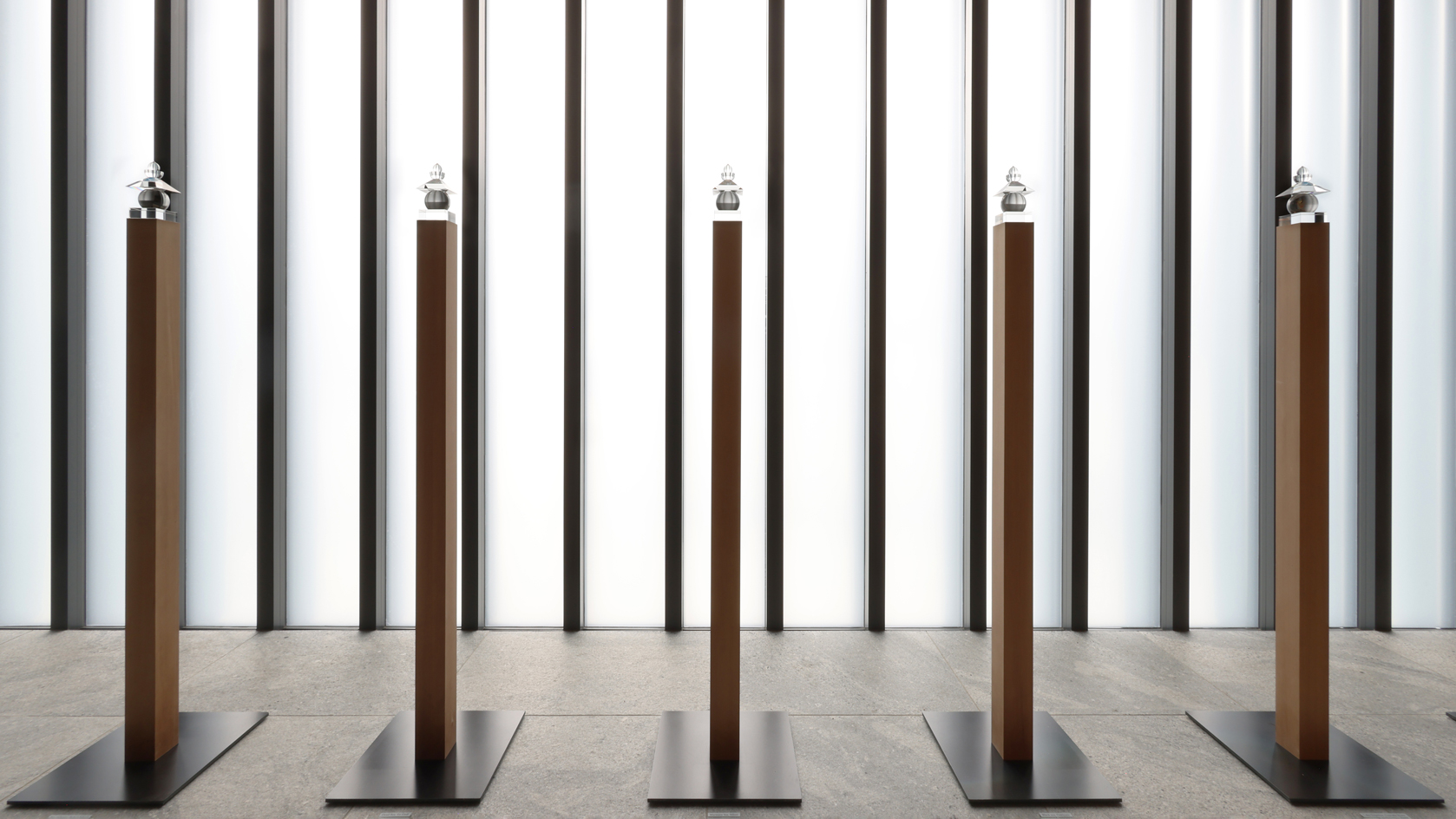 Hiroshi Sugimoto: ‘The deeper I explore Shinto and Buddhist art, the more it reveals the shallowness of contemporary art’
Hiroshi Sugimoto: ‘The deeper I explore Shinto and Buddhist art, the more it reveals the shallowness of contemporary art’‘Hiroshi Sugimoto – The Descent of the Kasuga Spirit’, at the Kasuga-Taisha shrine in Nara, Japan, sees the acclaimed photographer draw on Japan’s spiritual past and present
By Minako Norimatsu
-
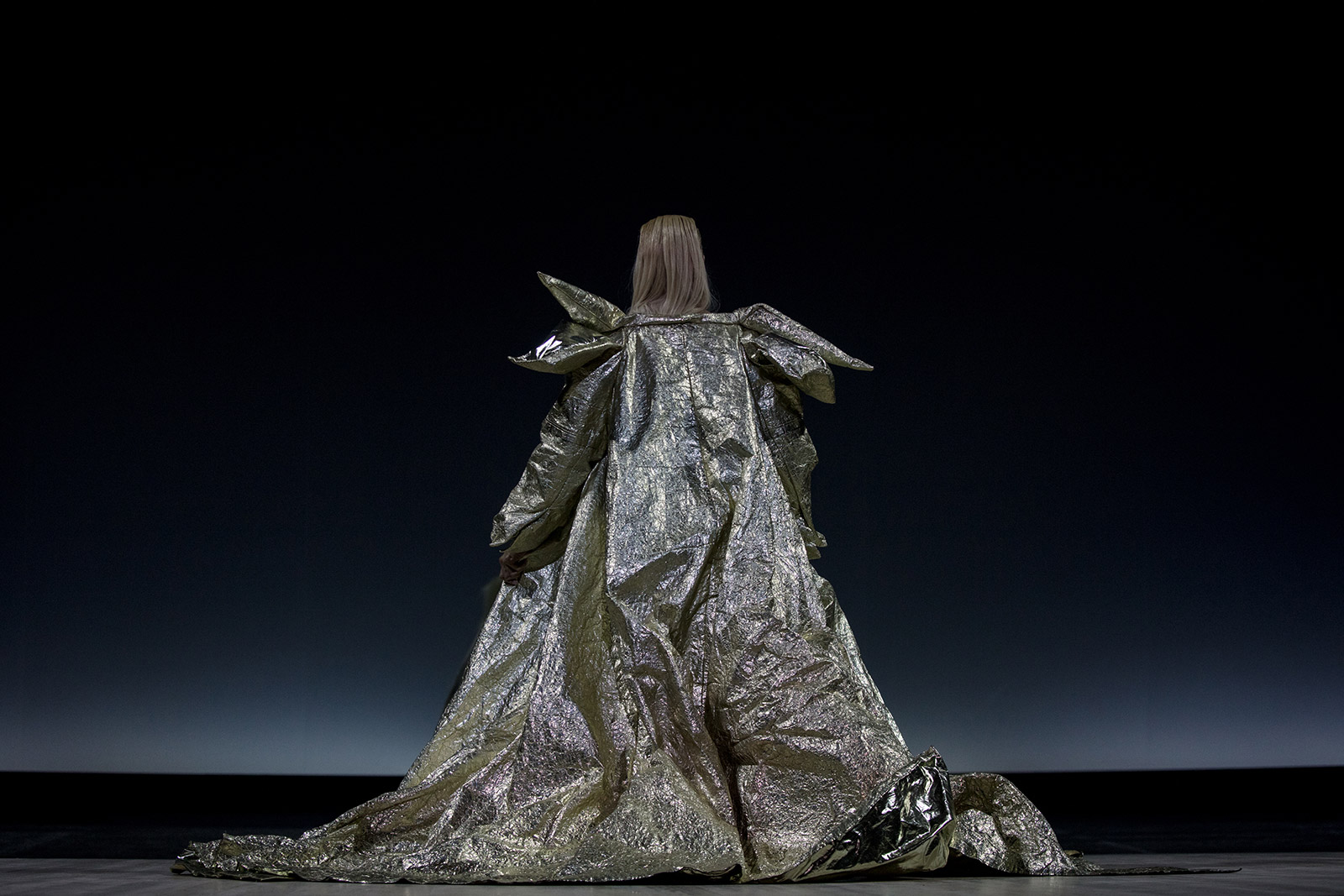 Celtic legend meets Japanese Noh theatre in dance directed by Hiroshi Sugimoto
Celtic legend meets Japanese Noh theatre in dance directed by Hiroshi SugimotoThe artist and photographer joined forces with fashion designer Rick Owens, choreographer Alessio Silvestrin and electronic composer Ryoji Ikeda for his first production at the Paris Opera
By Minako Norimatsu
-
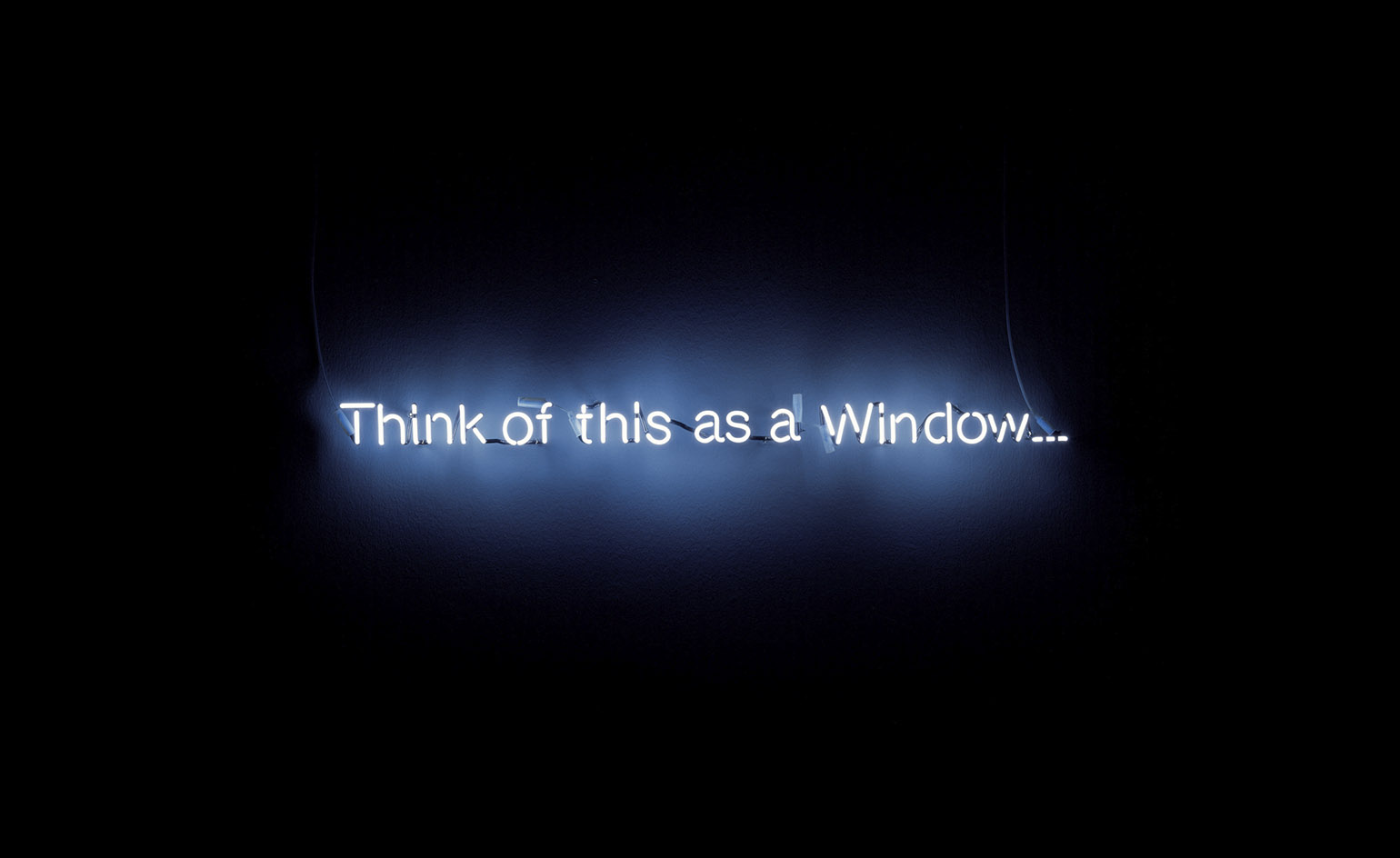 New horizons: ceramic brand Mutina champions its inaugural art project
New horizons: ceramic brand Mutina champions its inaugural art projectBy Rosa Bertoli
-
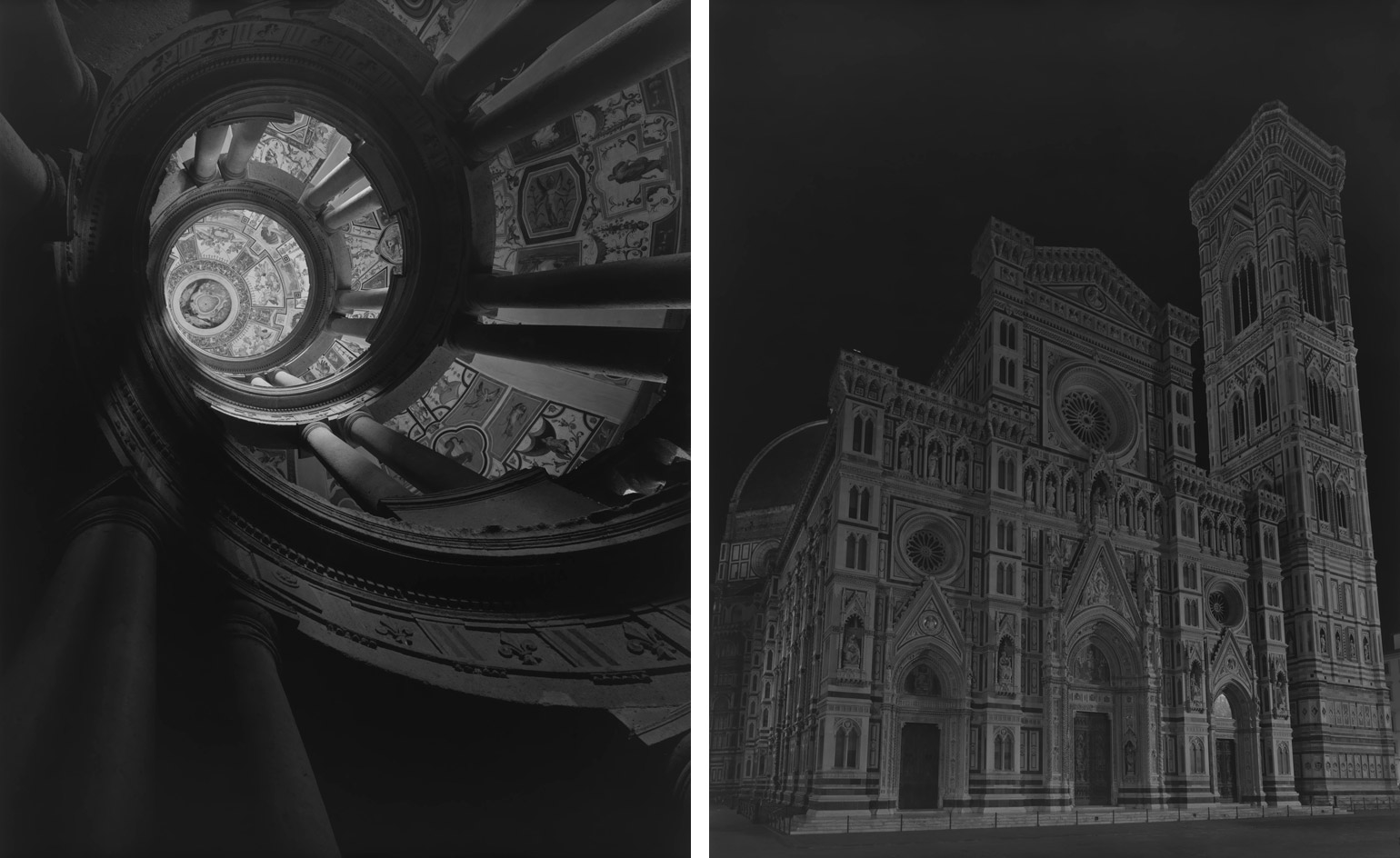 Hiroshi Sugimoto retraces one of the earliest encounters between Japan and the West
Hiroshi Sugimoto retraces one of the earliest encounters between Japan and the WestBy Charlotte Jansen
-
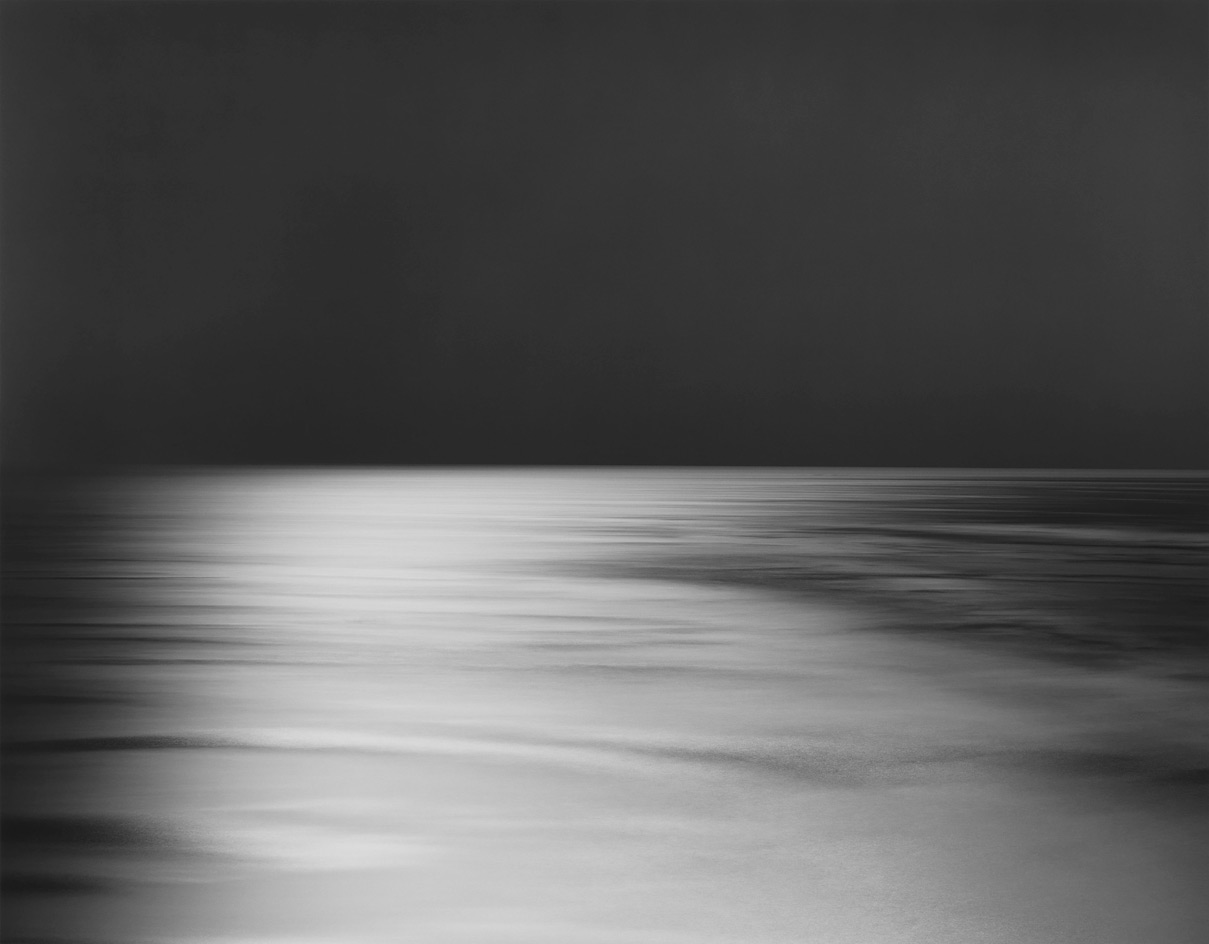 Dark arts: Hiroshi Sugimoto thinks outside the black box
Dark arts: Hiroshi Sugimoto thinks outside the black boxBy Yoko Choy
-
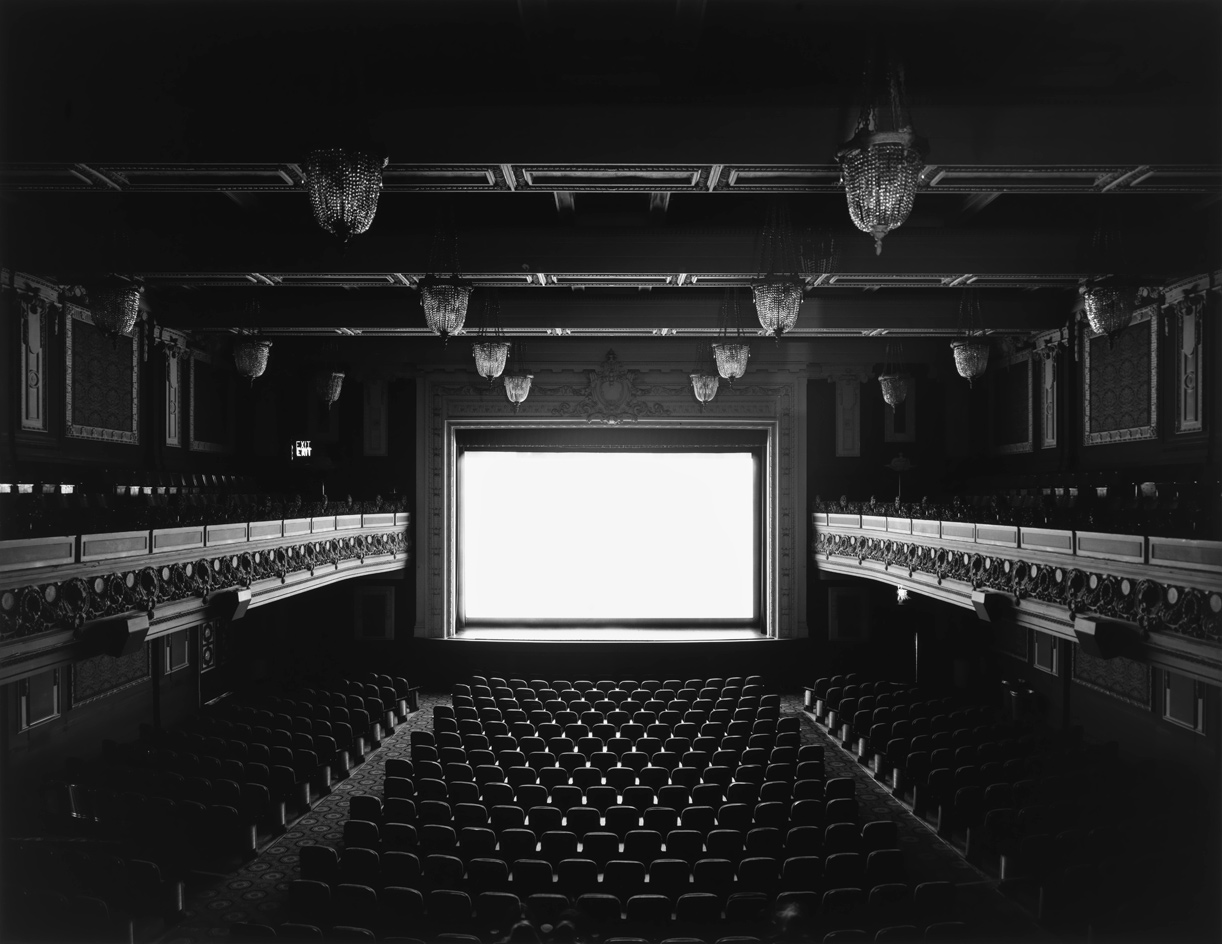 Screen idol: Hiroshi Sugimoto’s serene series of theatres is worth looking up to
Screen idol: Hiroshi Sugimoto’s serene series of theatres is worth looking up toBy Jessica Klingelfuss
-
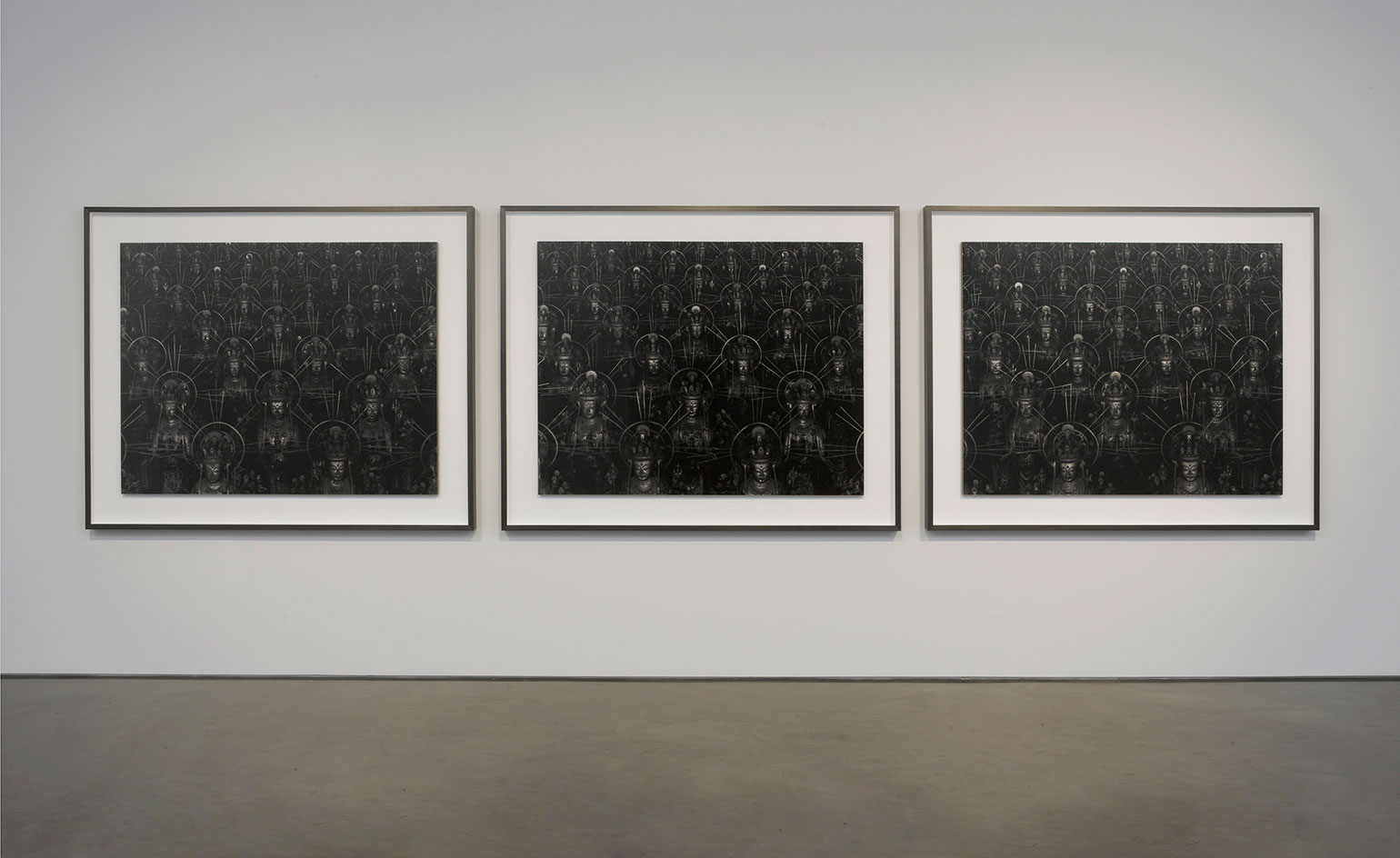 Spiritual side: Hiroshi Sugimoto explores space and time with his ’Sea of Buddha’
Spiritual side: Hiroshi Sugimoto explores space and time with his ’Sea of Buddha’By Brook Mason